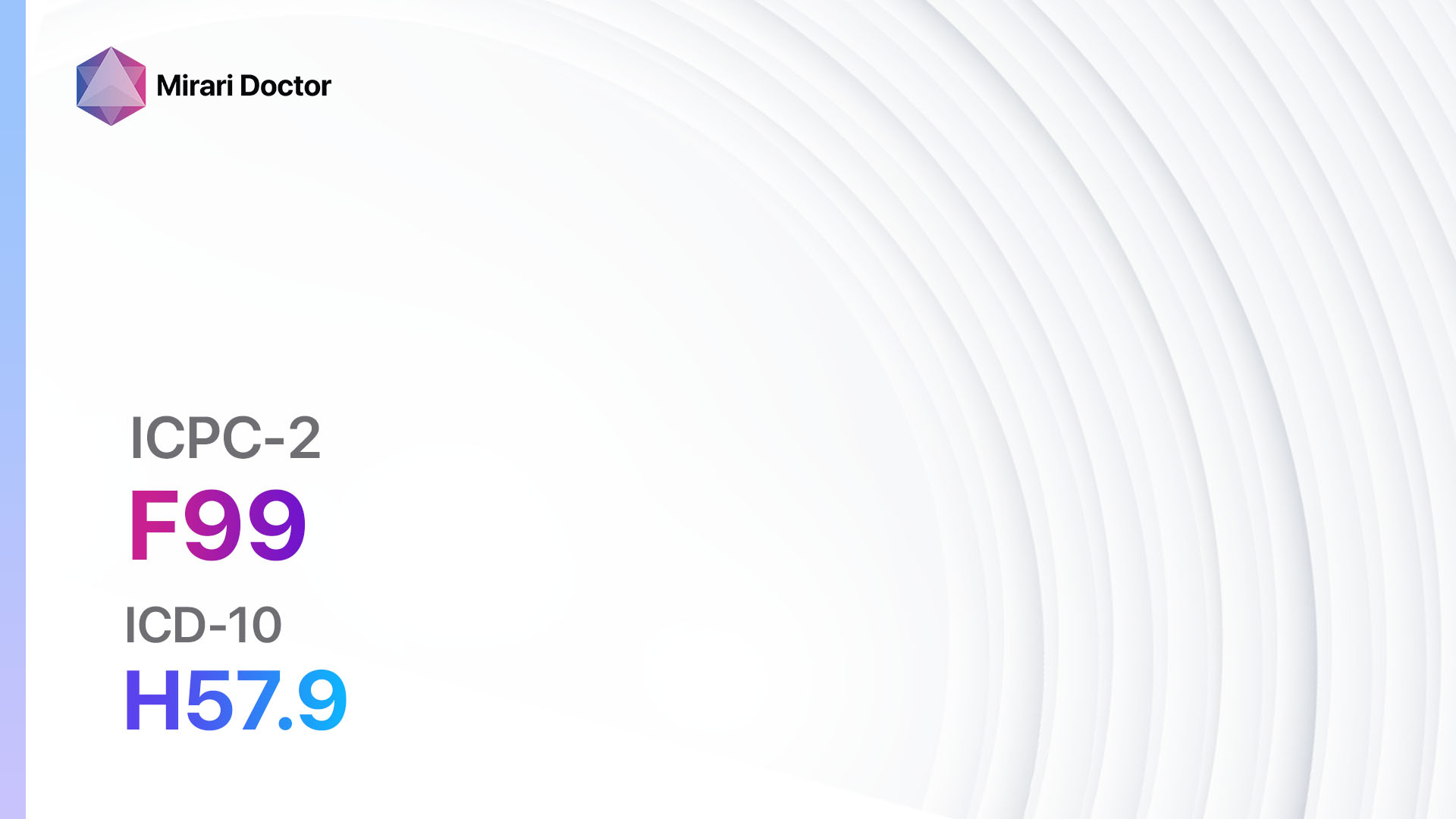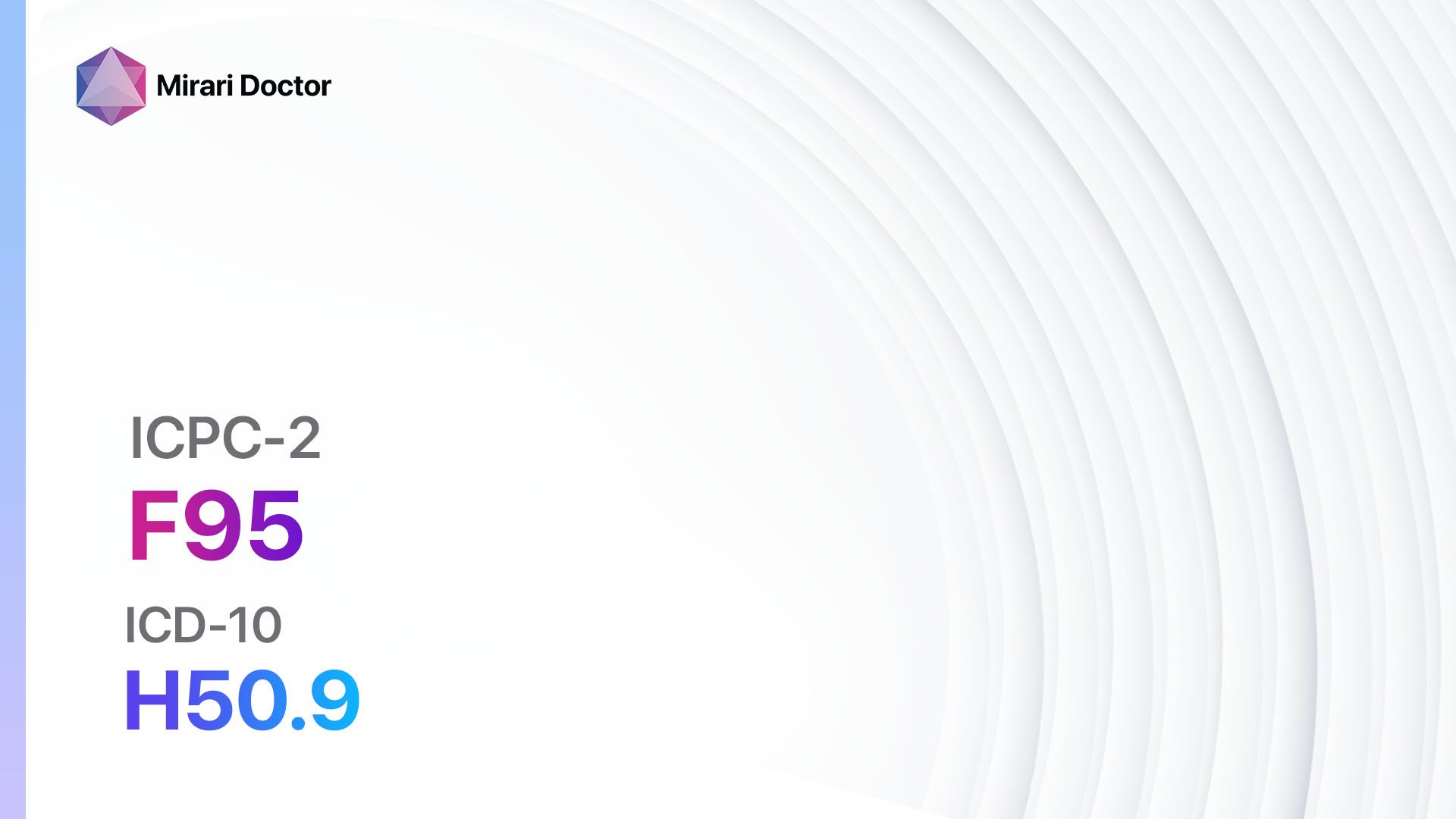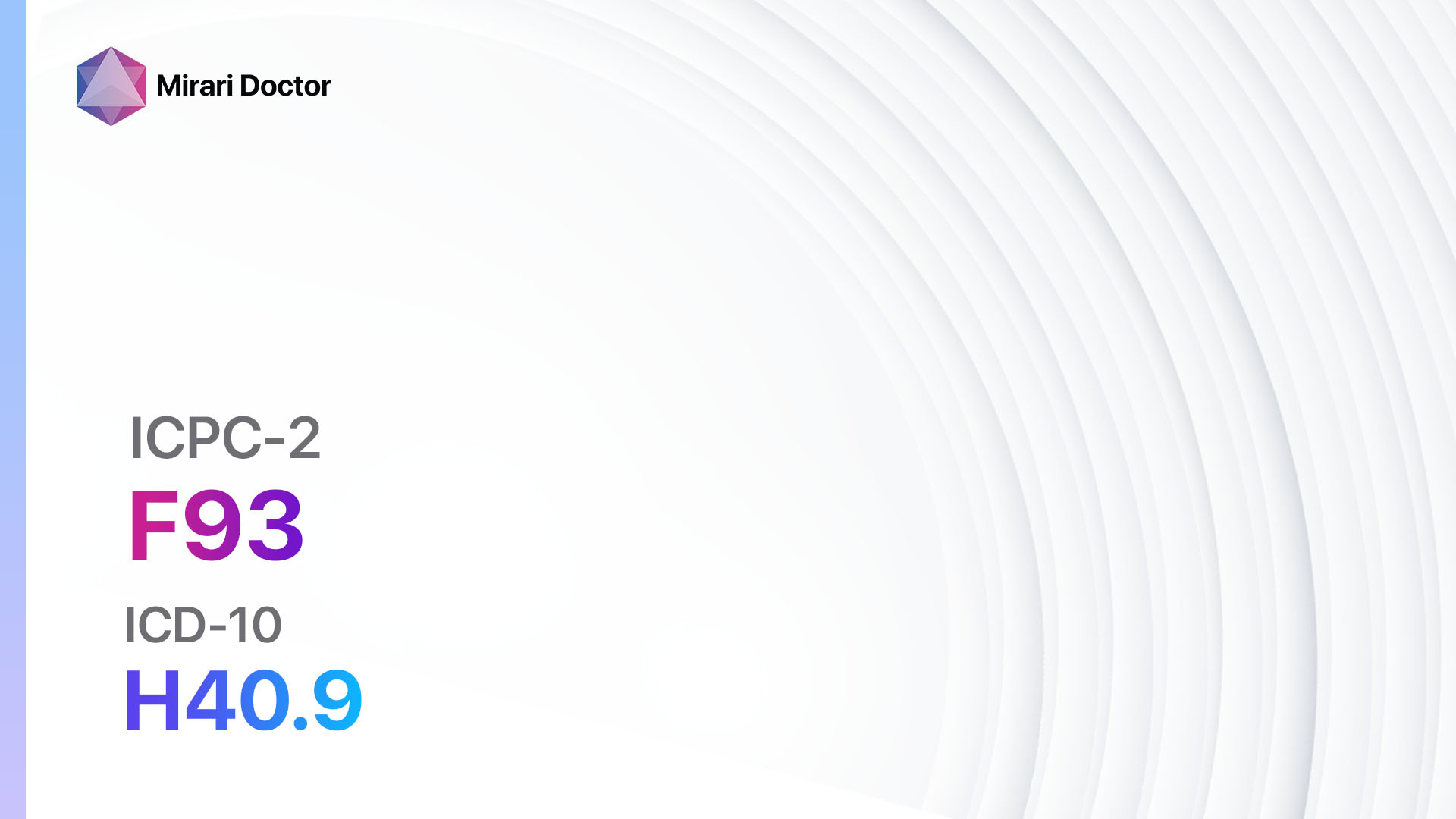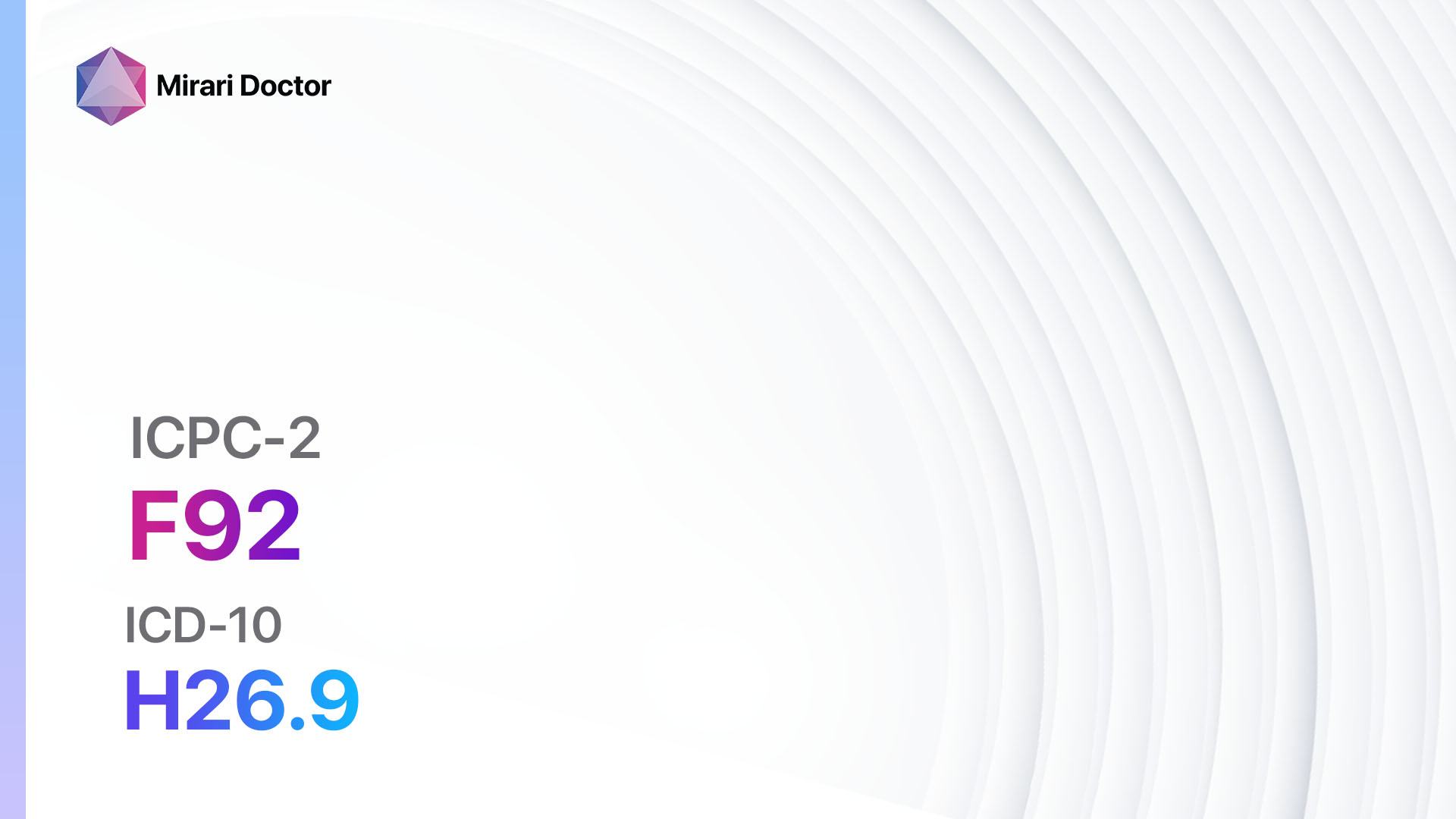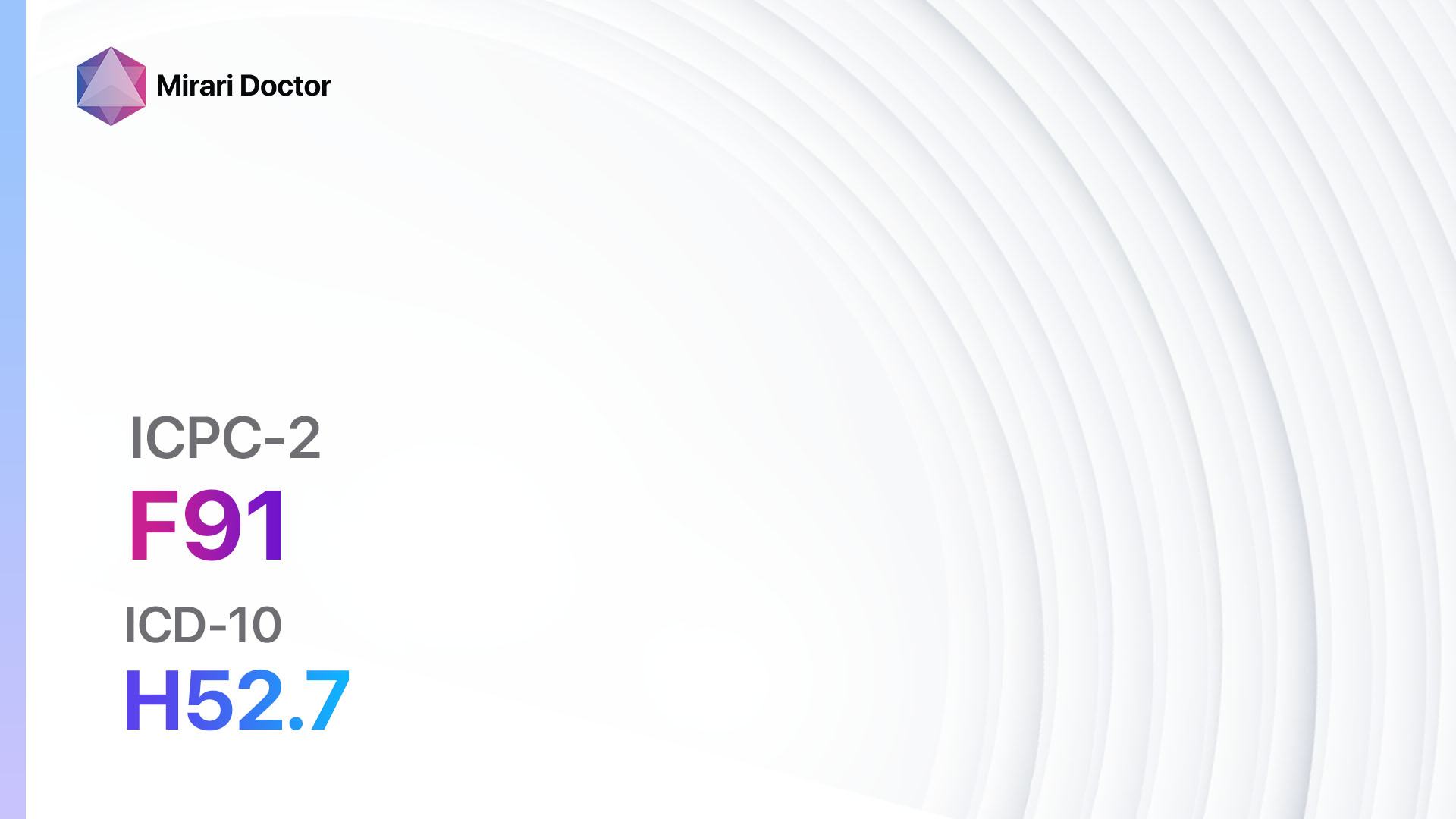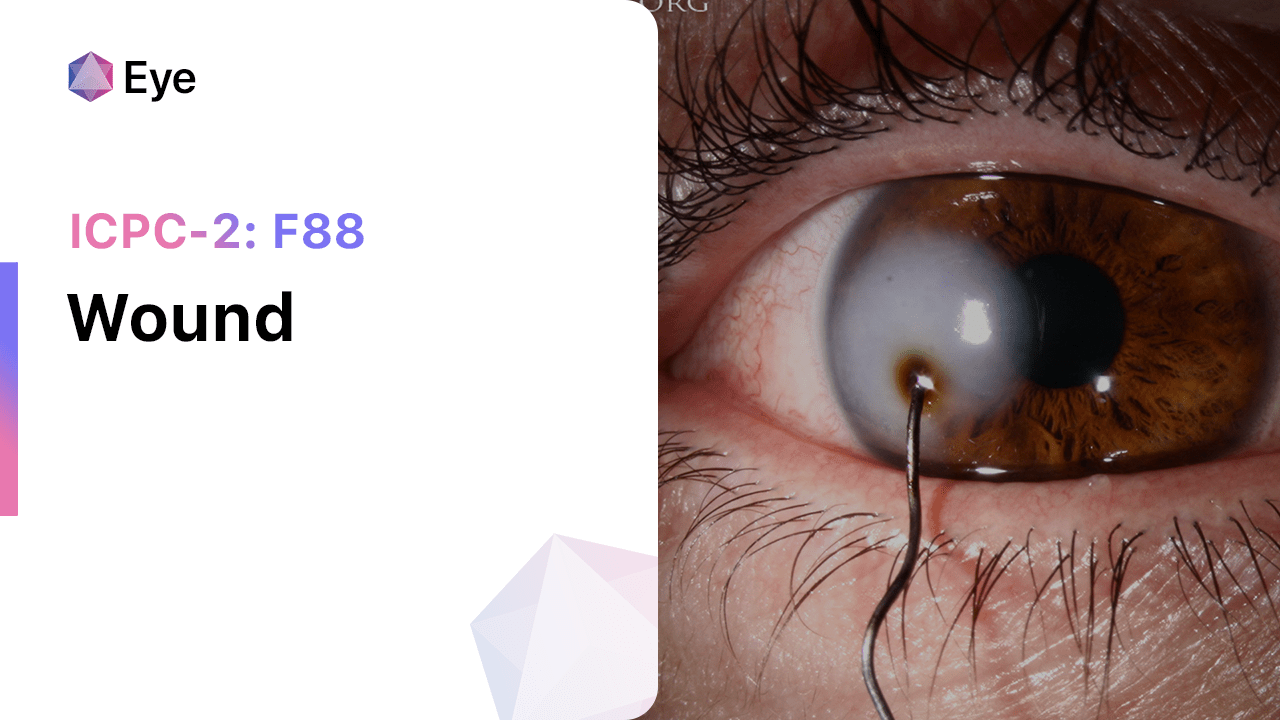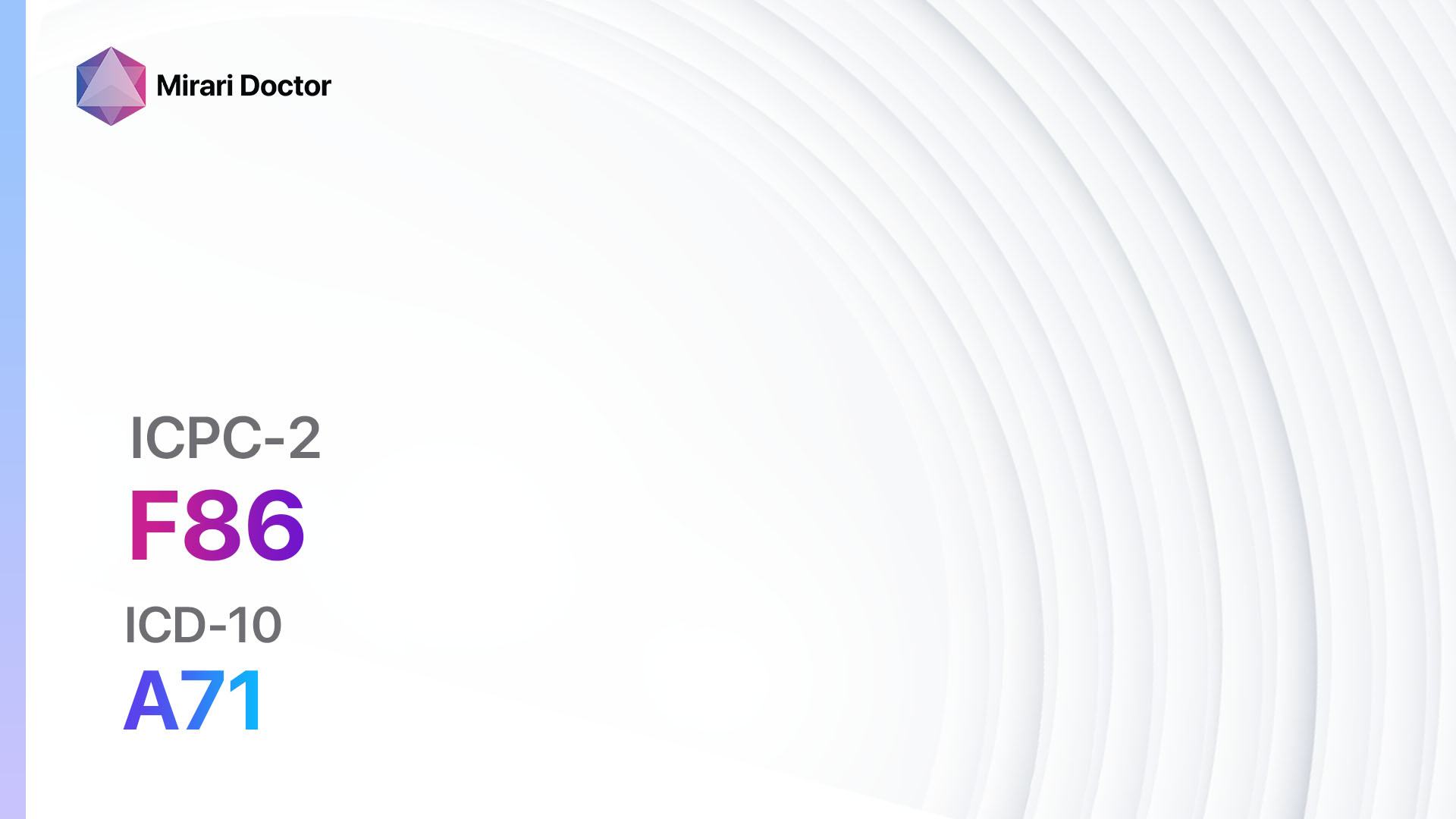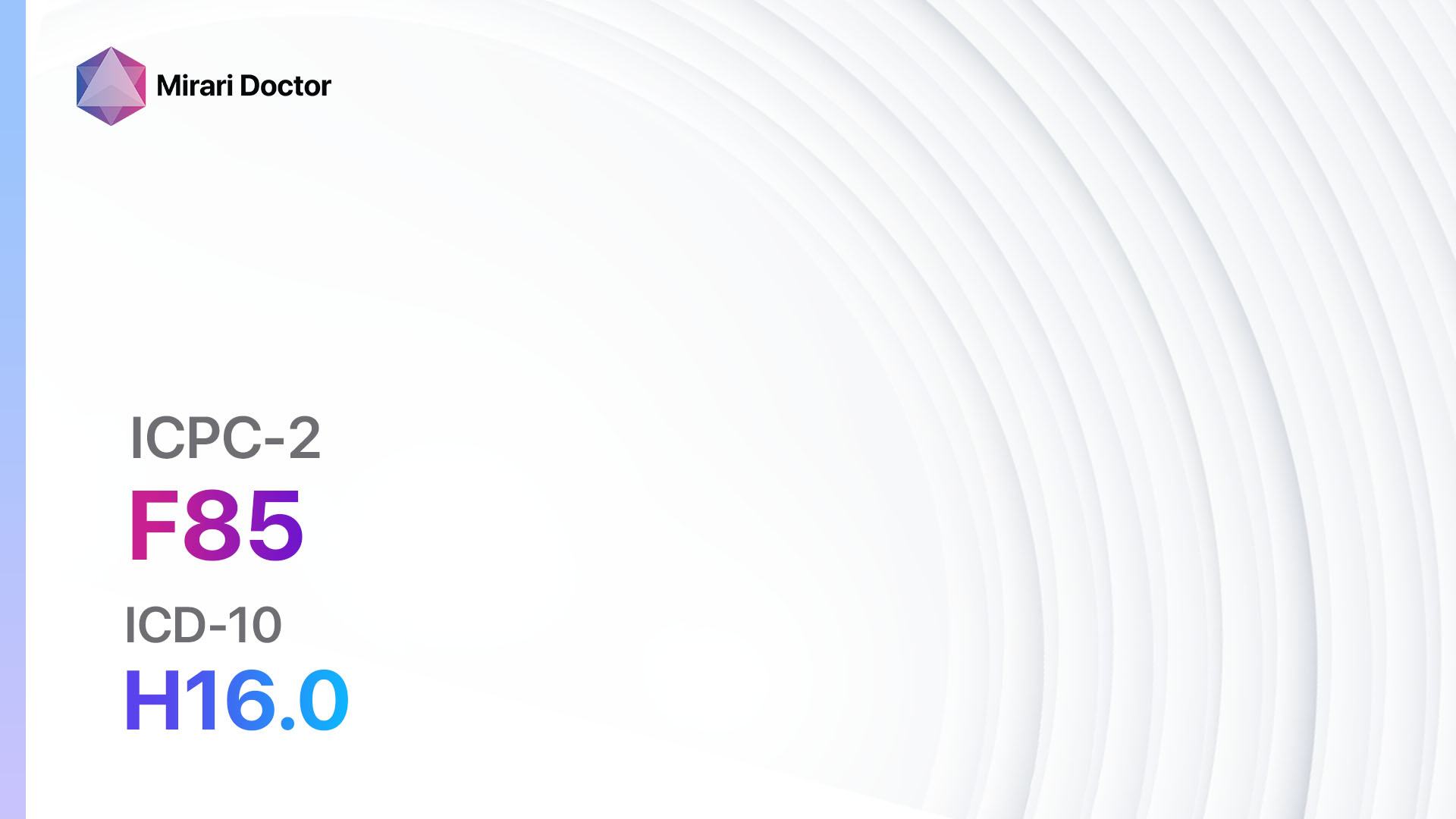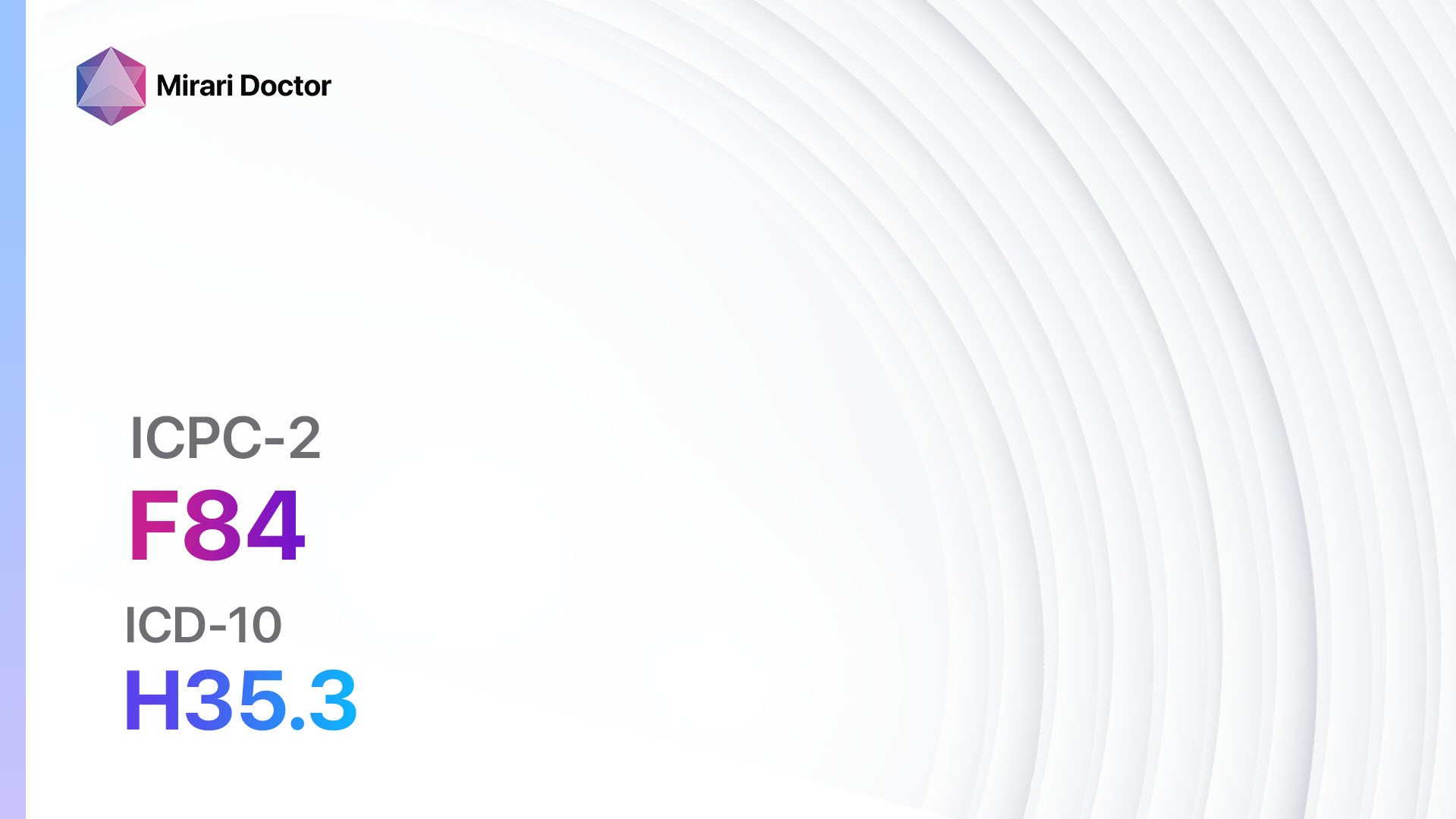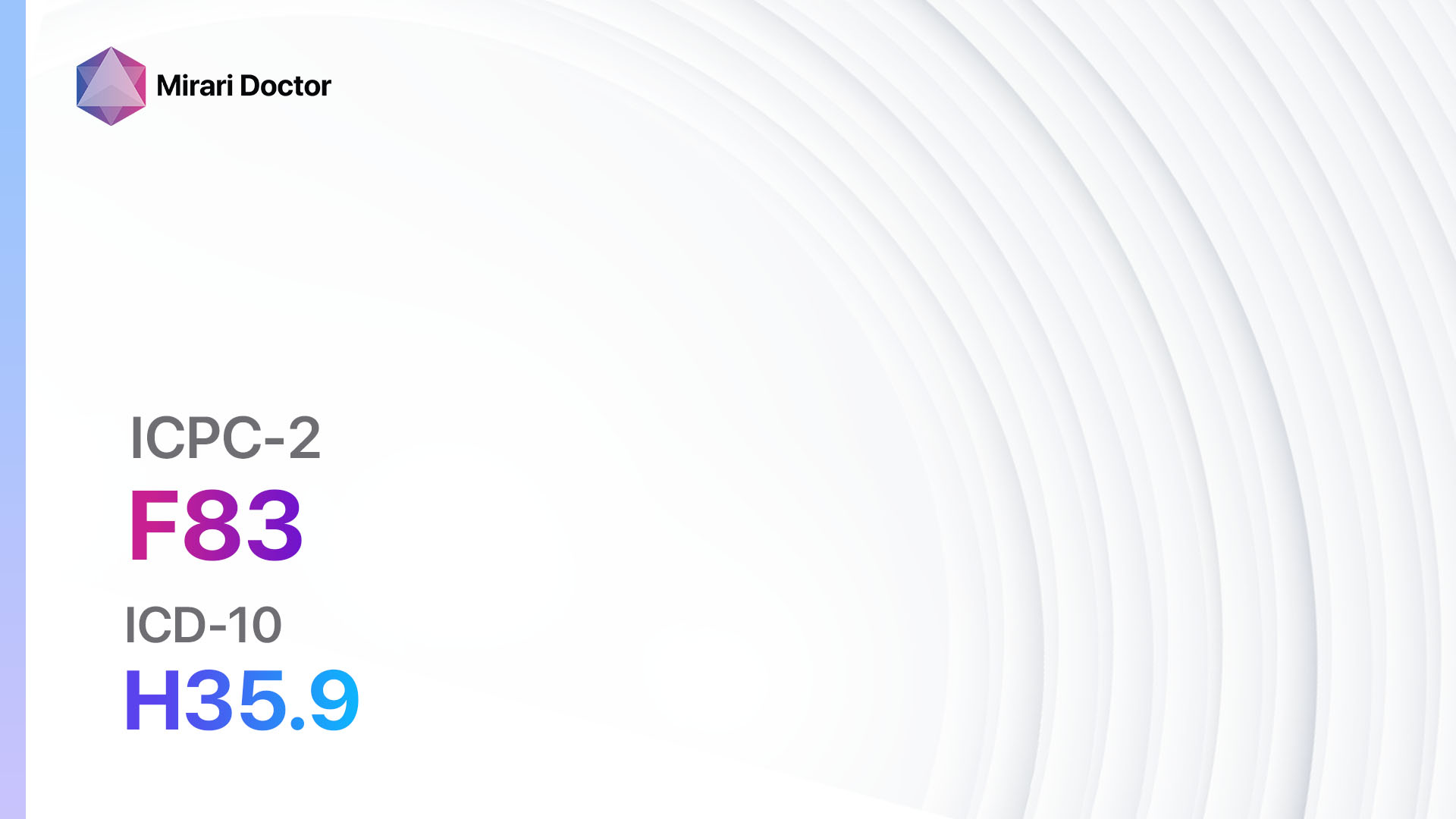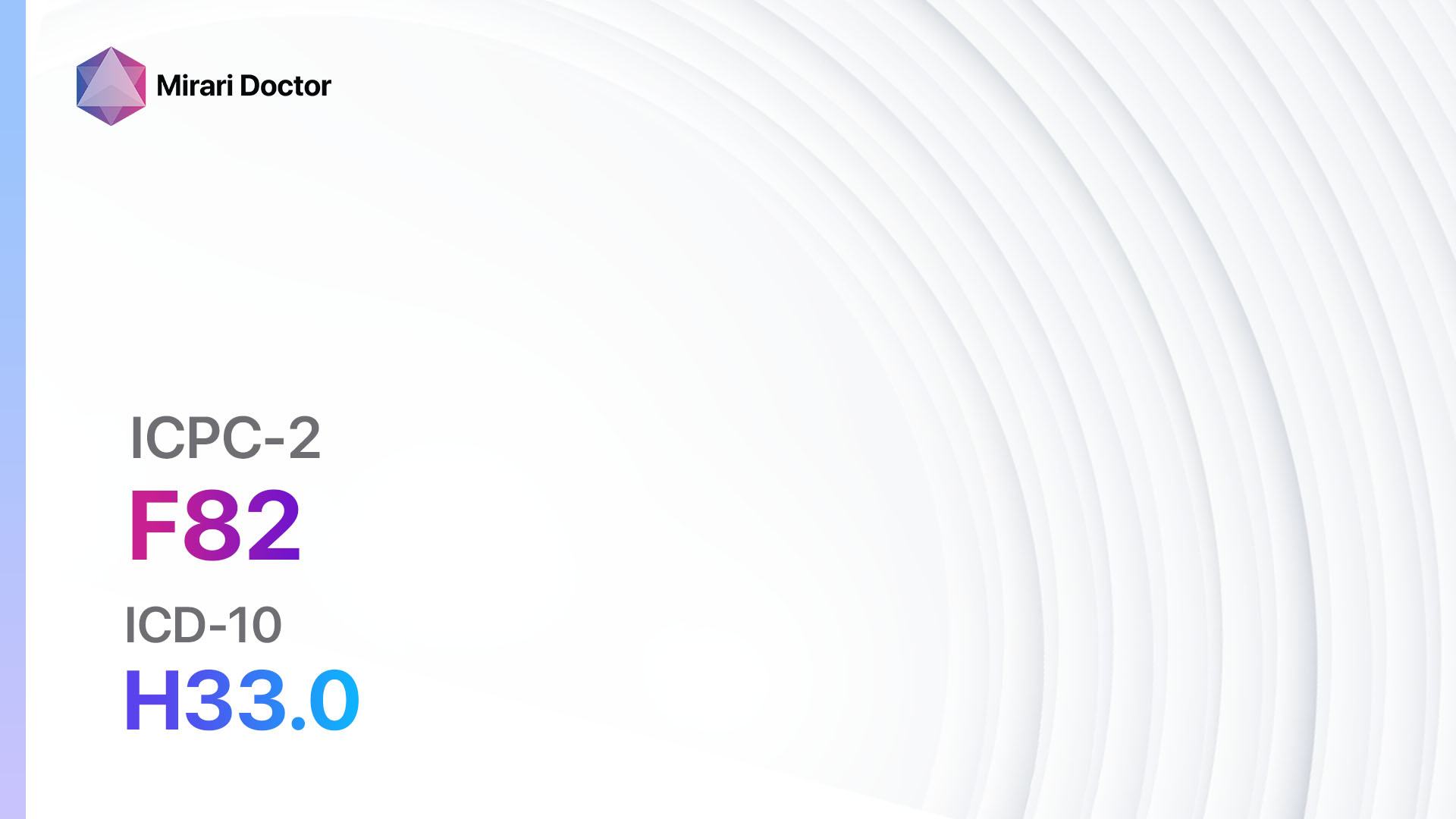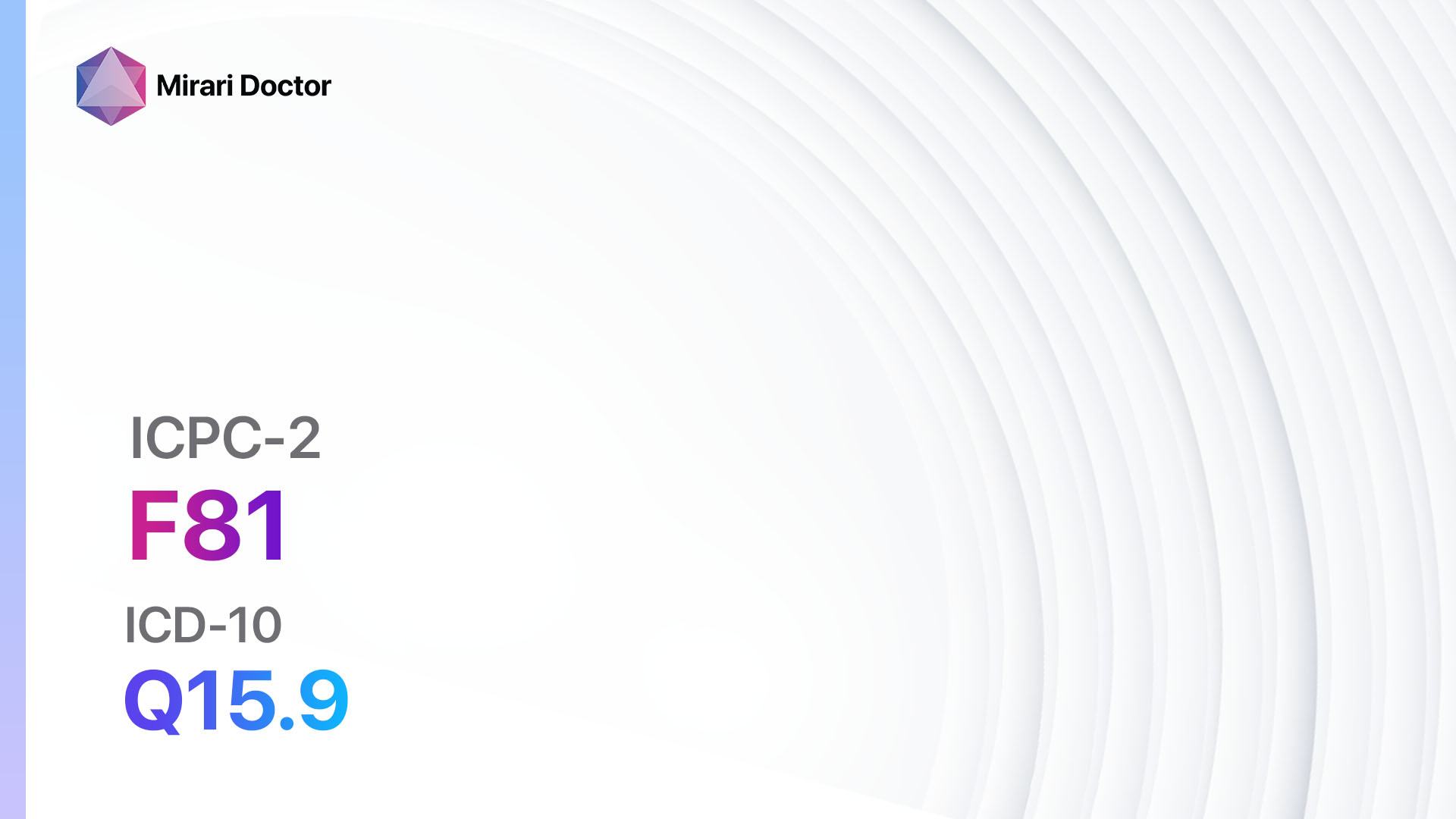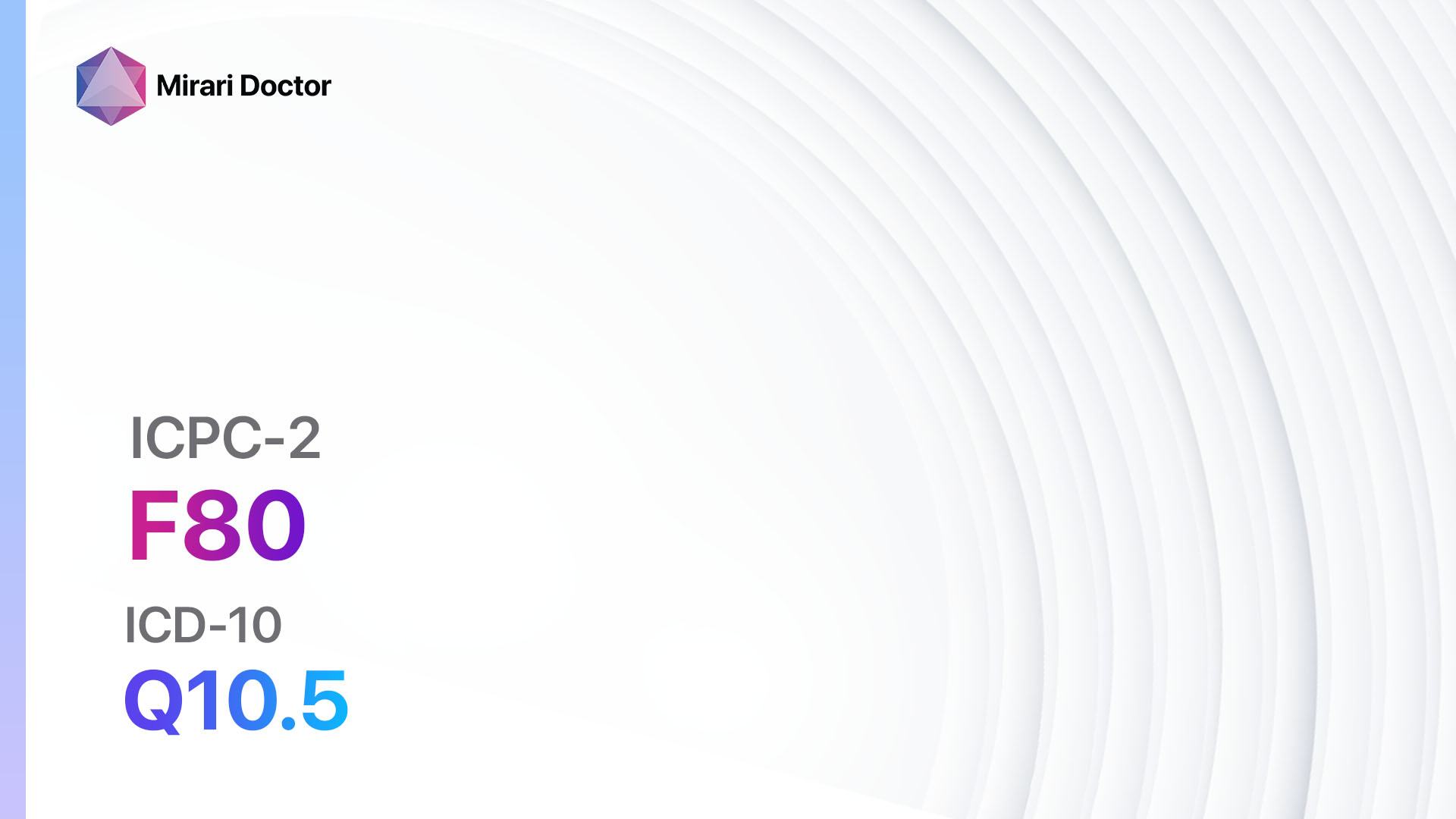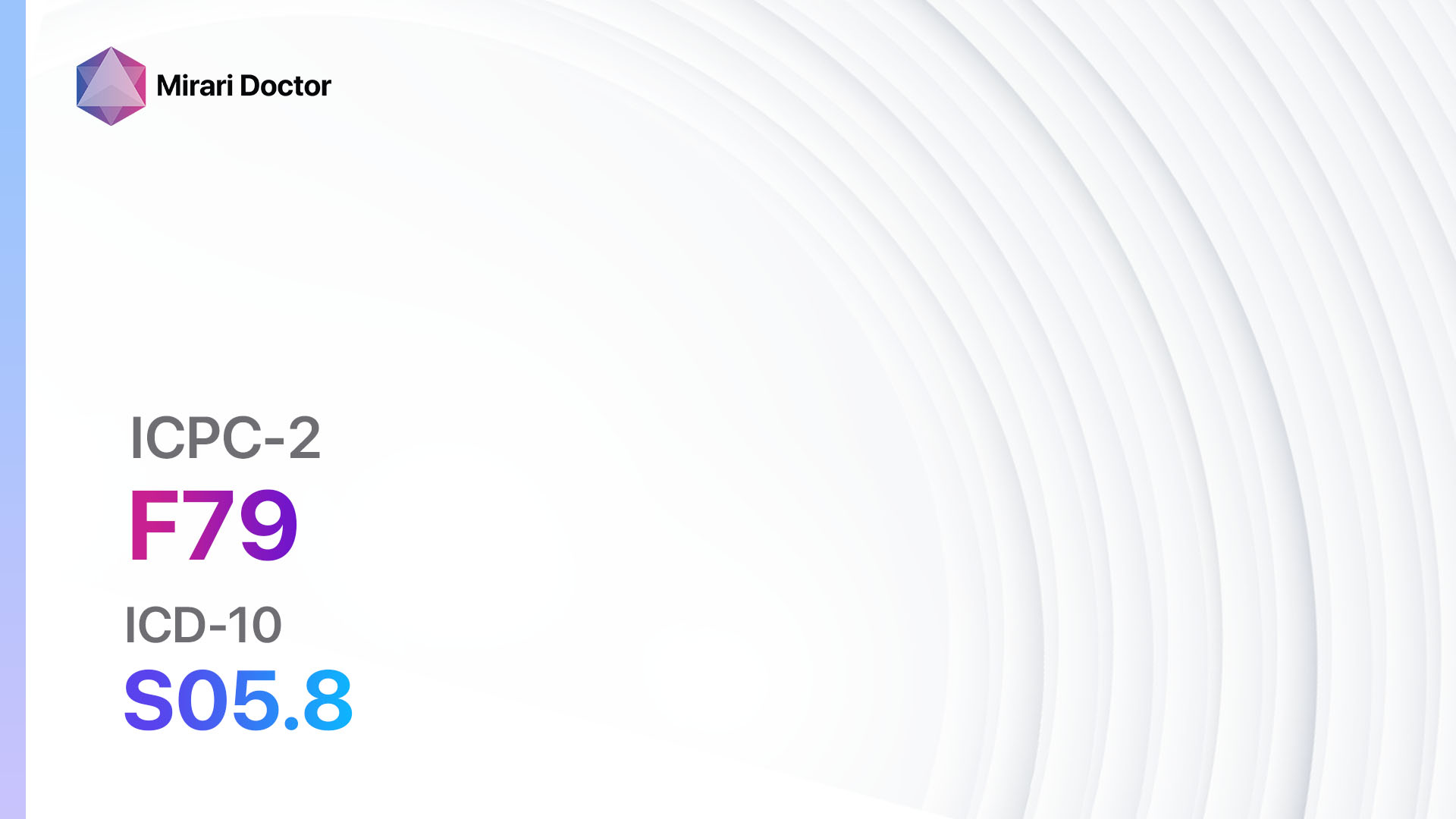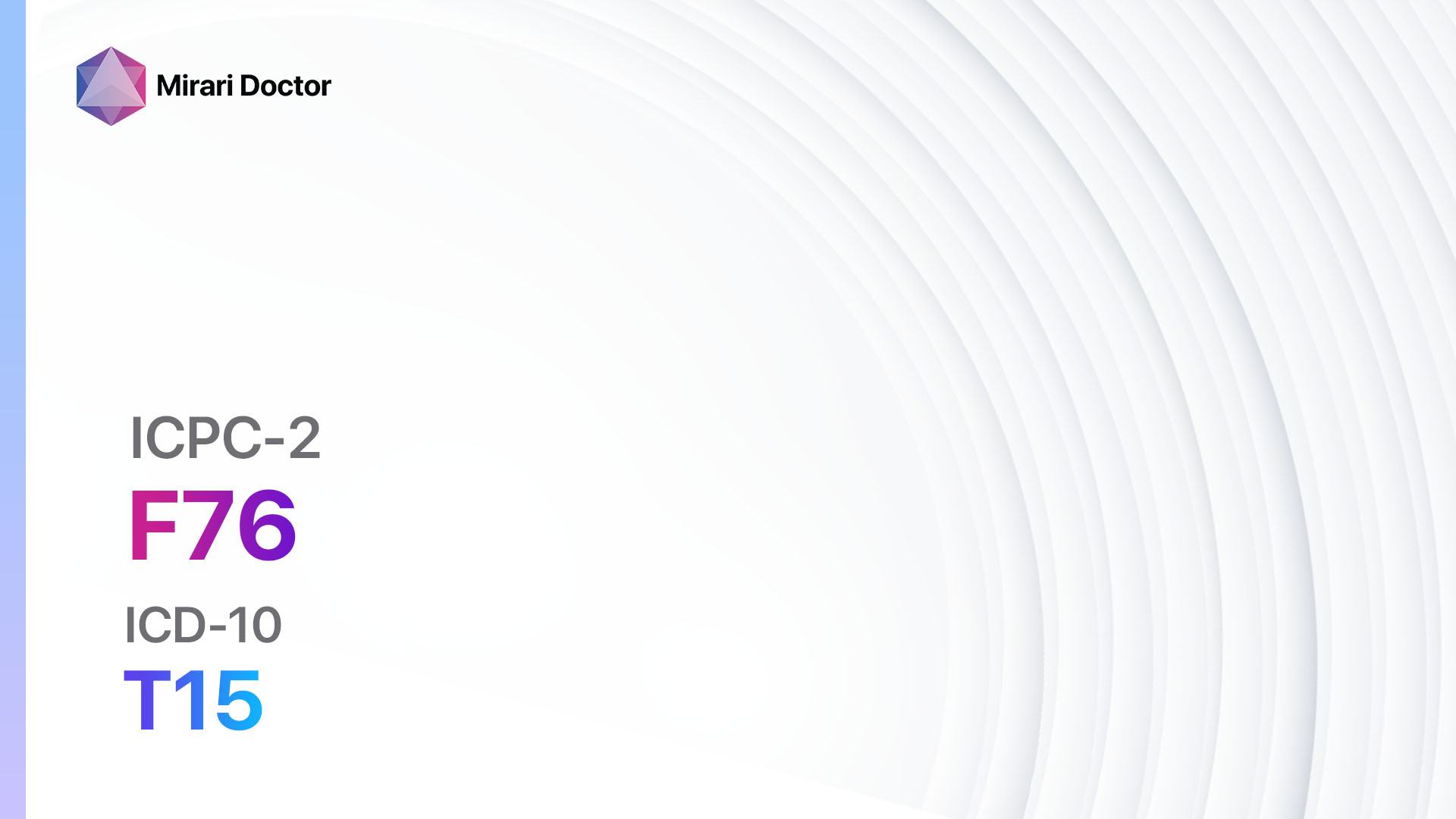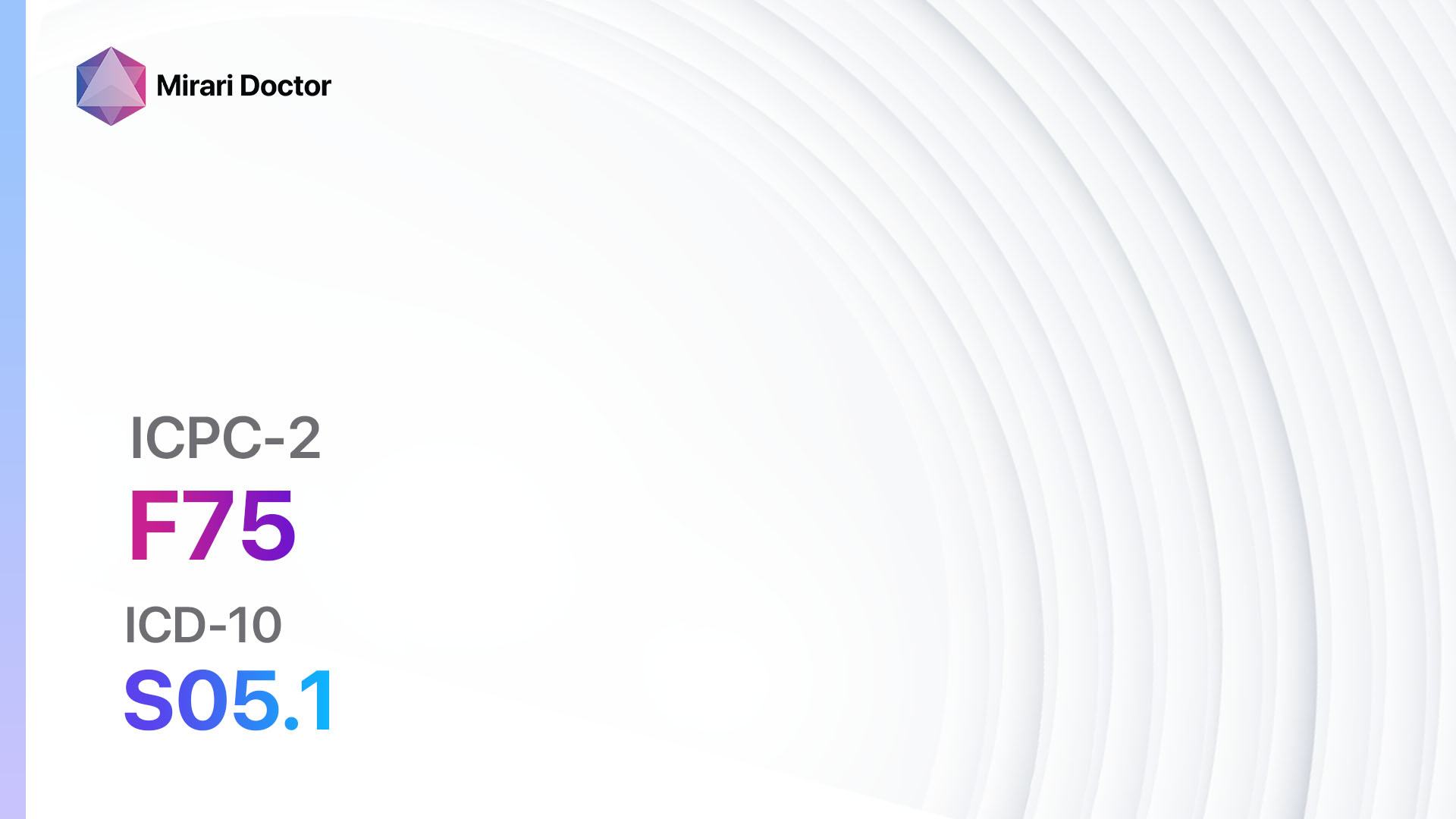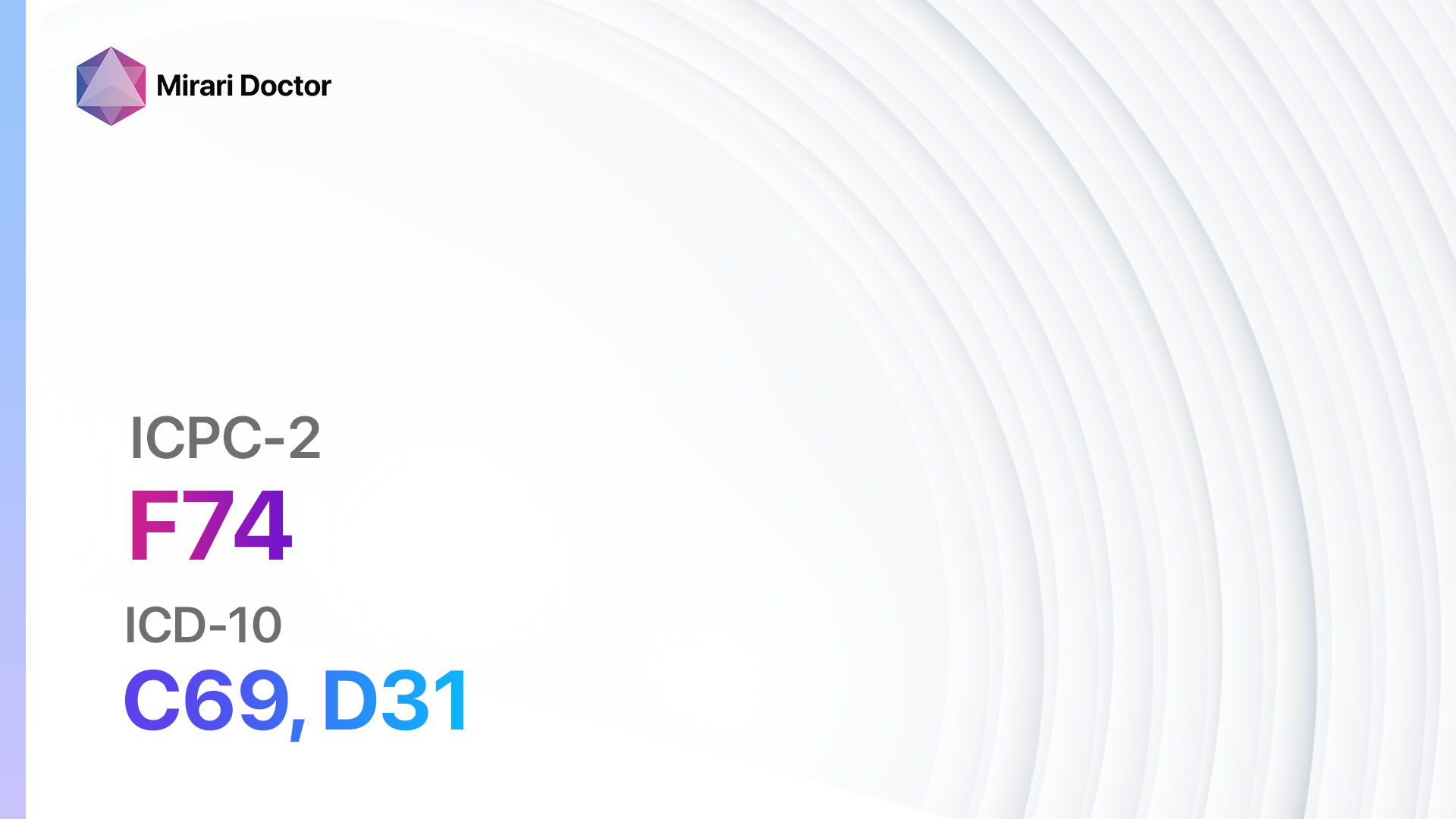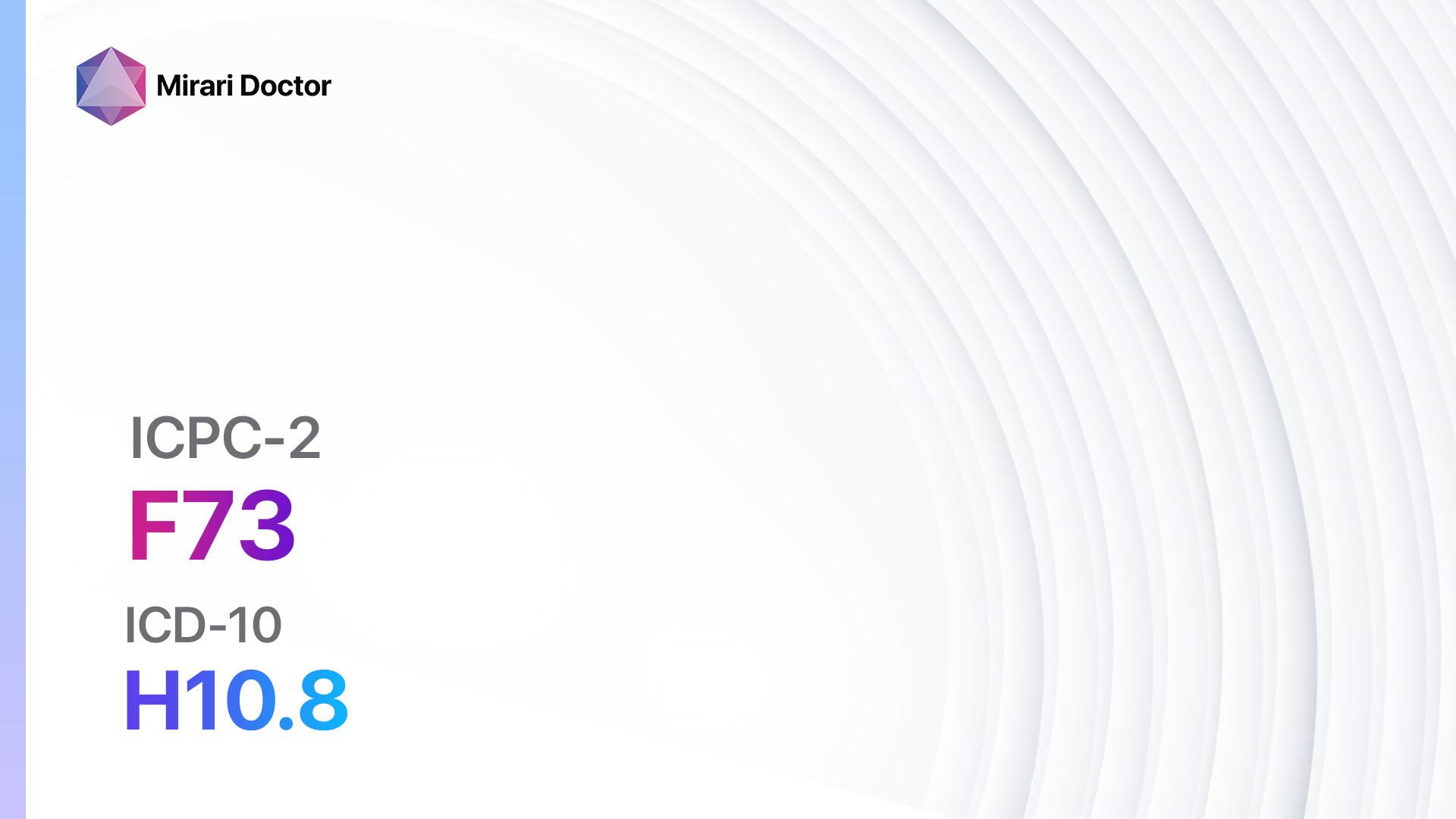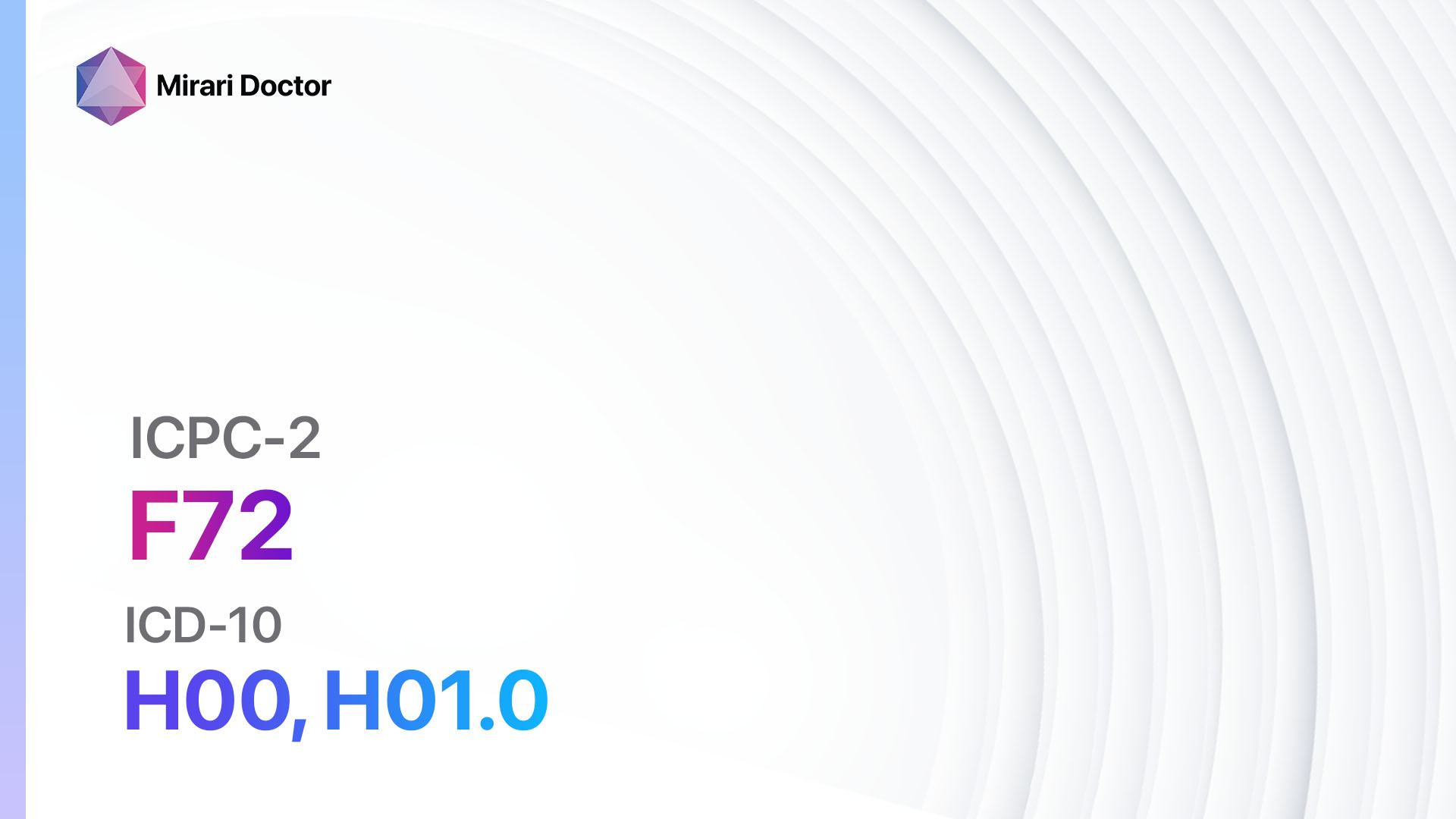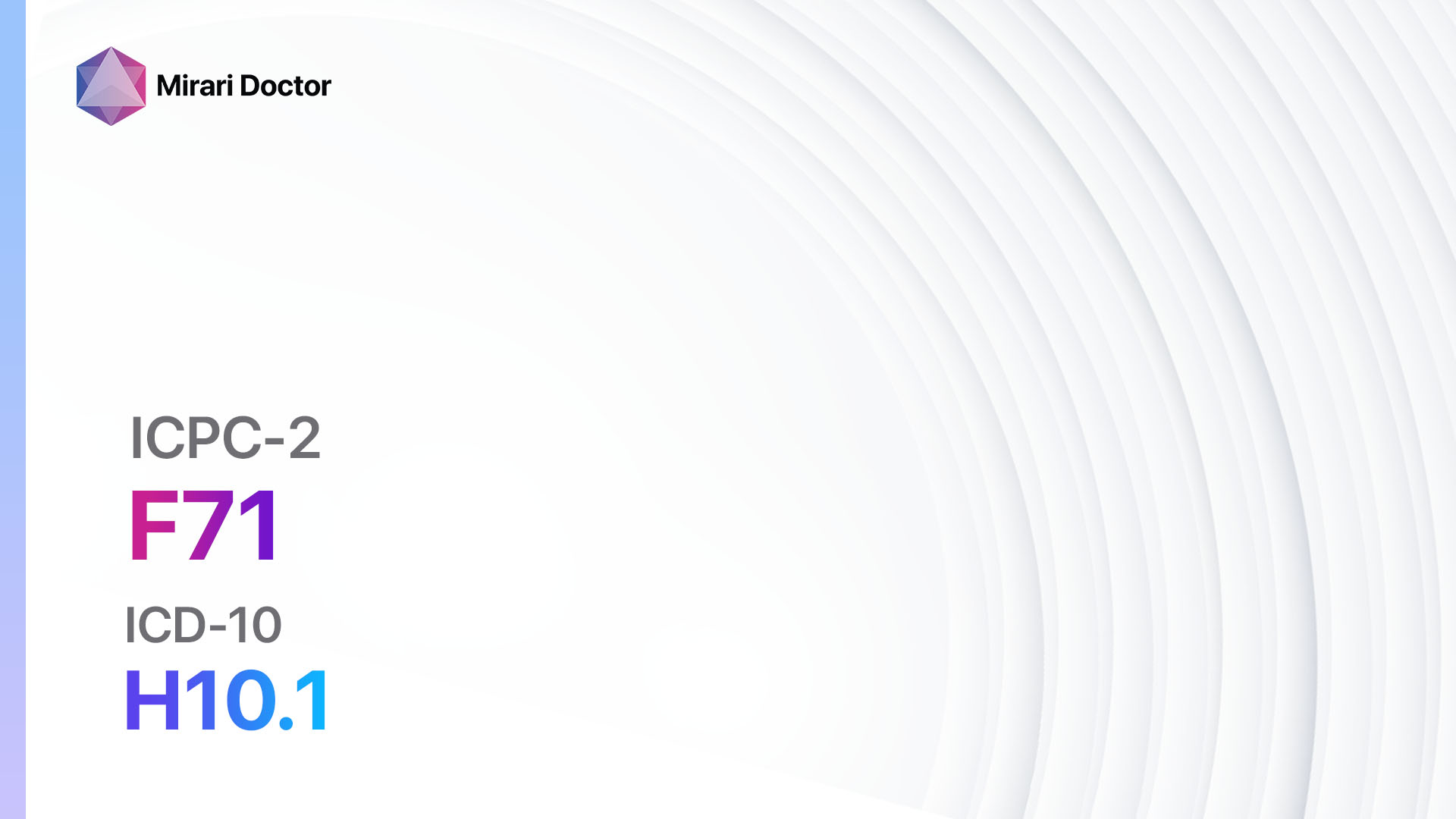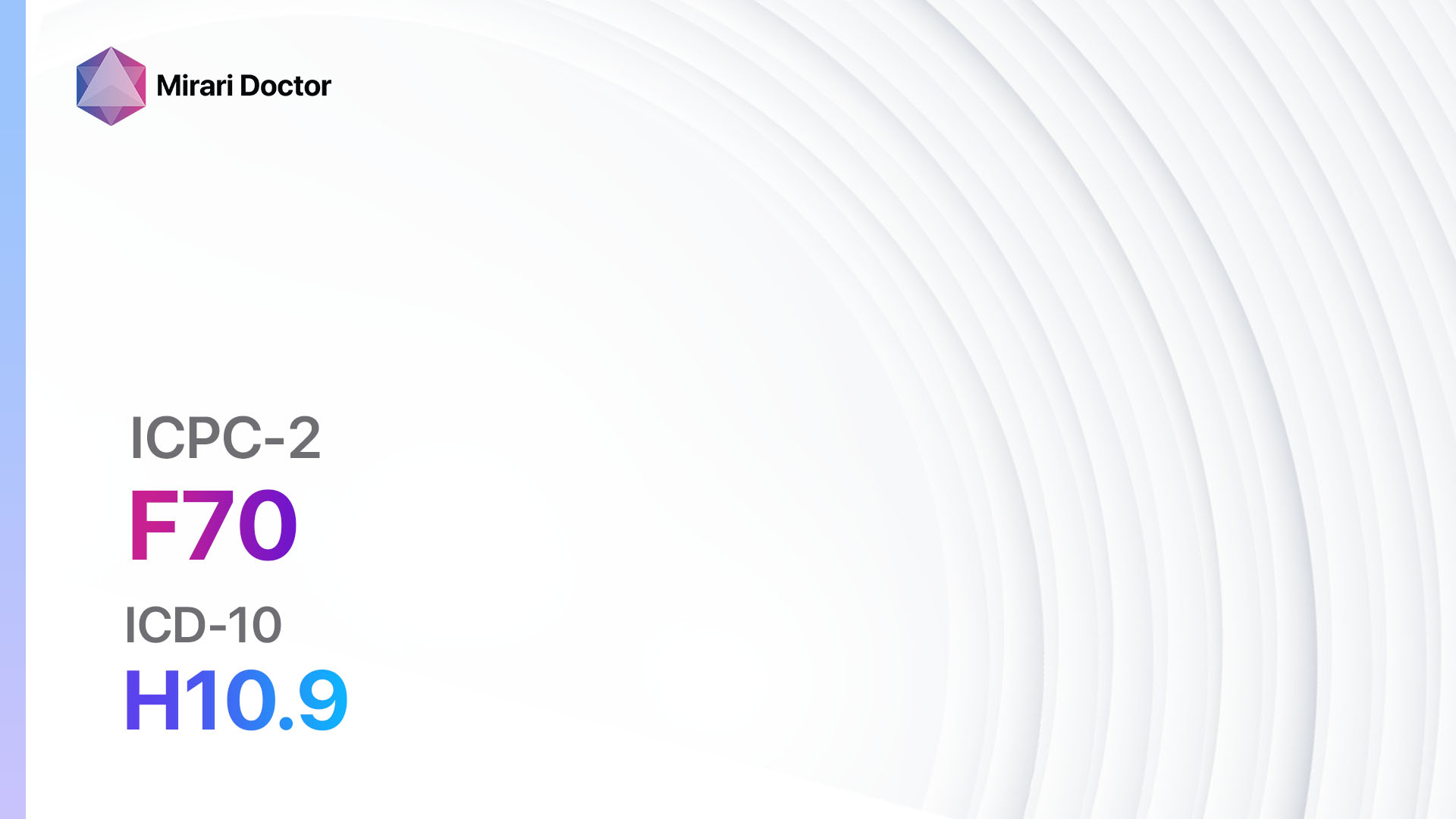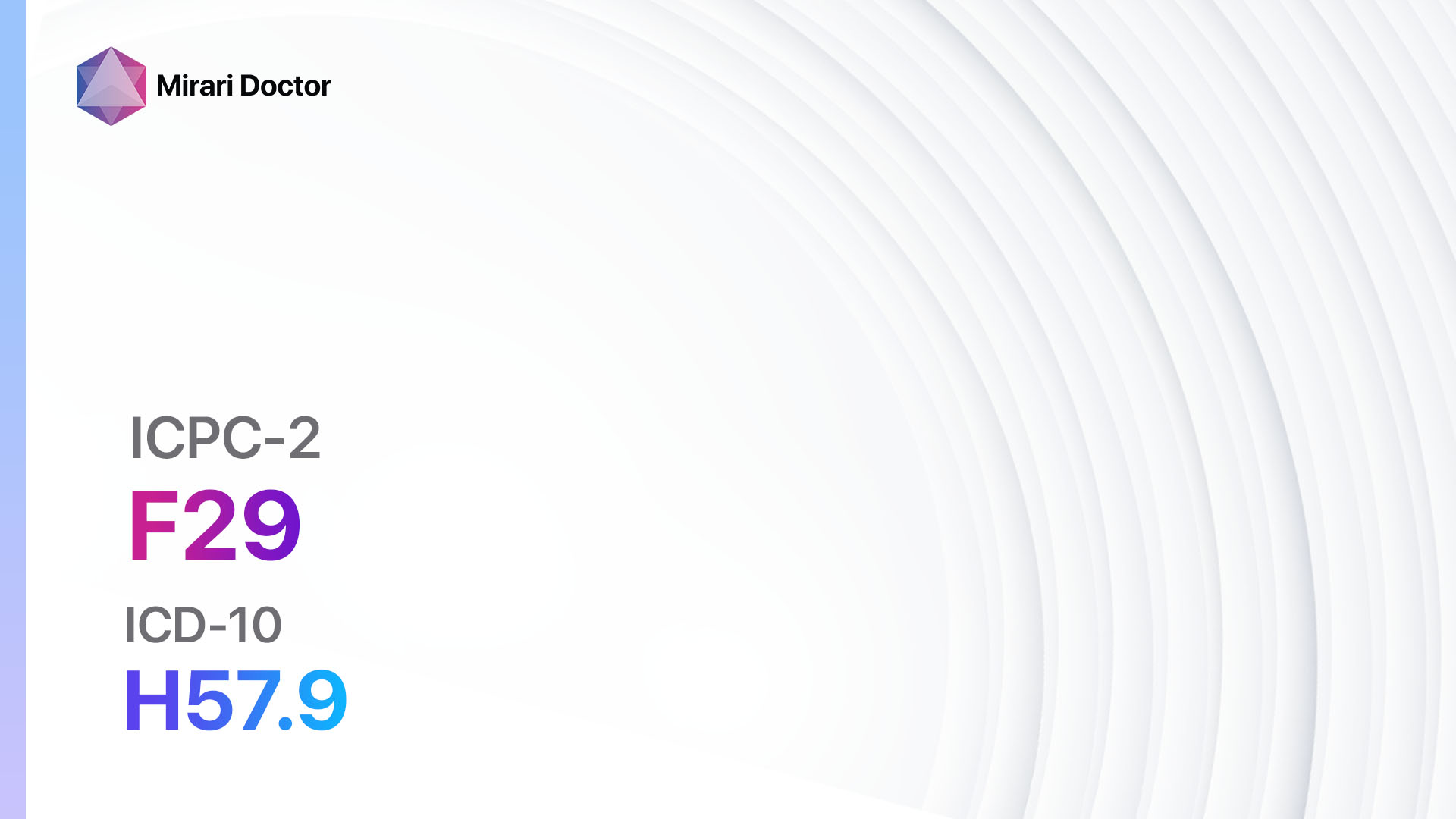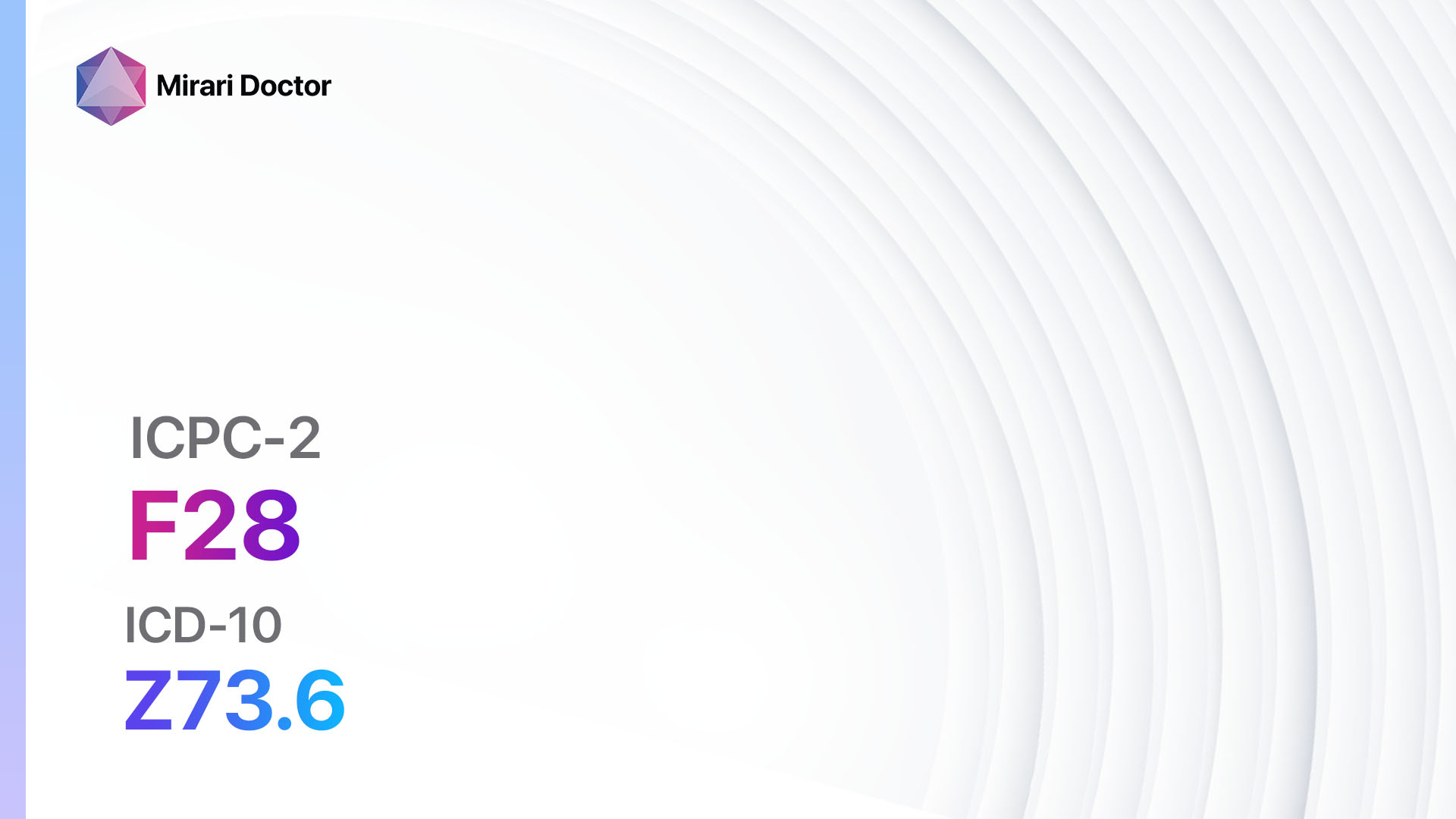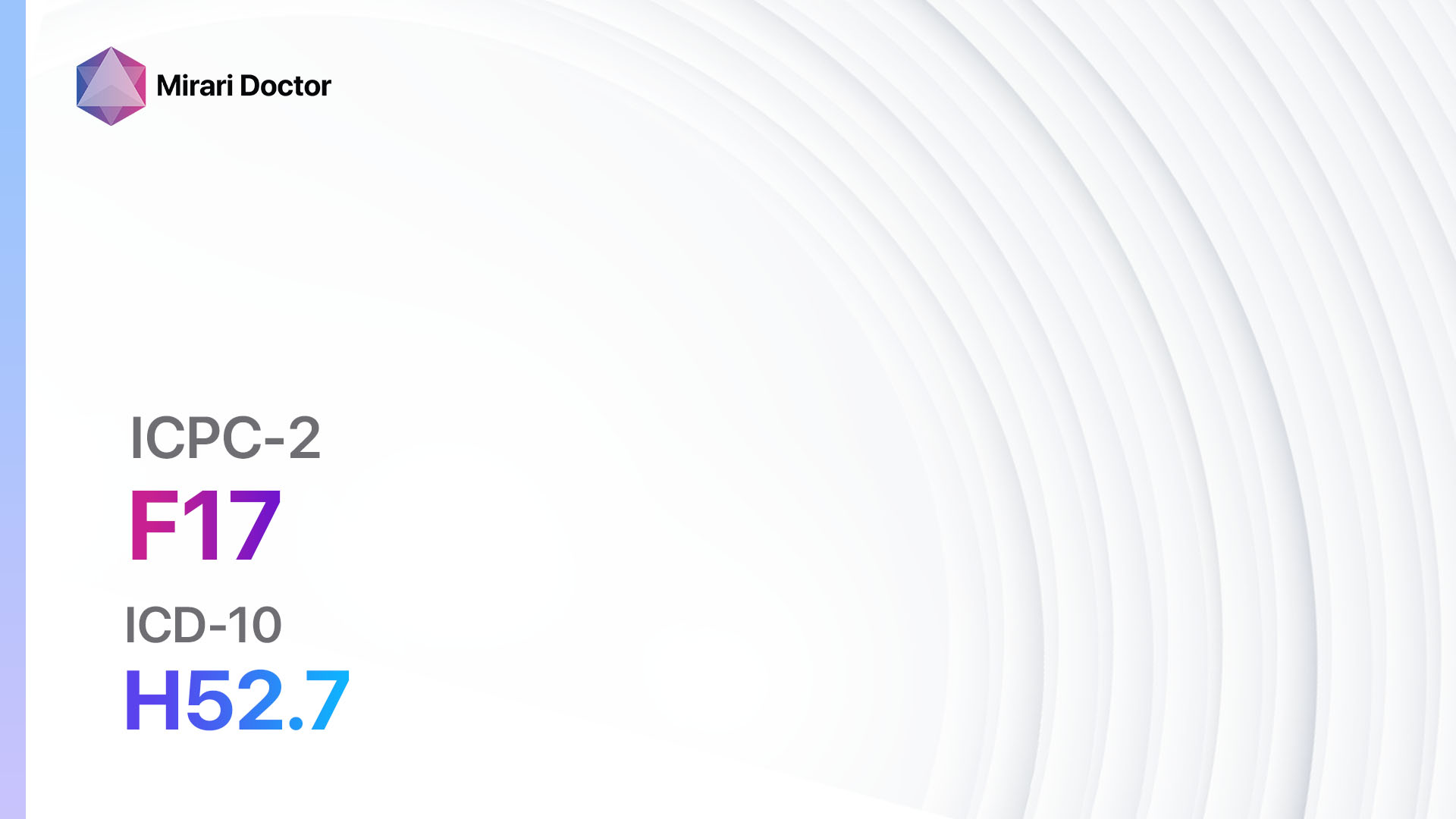
Introduction
Glasses symptom/complaint refers to the visual impairment experienced by individuals, leading to the need for corrective eyewear such as glasses. This condition is significant as it affects a large population and can have a significant impact on daily activities and quality of life.[1] The aim of this guide is to provide healthcare professionals with a comprehensive approach to diagnosing and managing glasses symptom/complaint
Codes
Symptoms
- Blurred vision: Patients may complain of difficulty in seeing objects clearly, both near and far.[3]
- Double vision: Some individuals may experience seeing two images instead of one.[4]
- Eye strain: Patients may report discomfort or fatigue in the eyes, especially after prolonged visual tasks.[5]
- Headaches: Persistent headaches, especially after reading or using electronic devices, may be a symptom of glasses symptom/complaint.[6]
- Squinting: Patients may squint their eyes in an attempt to improve focus and clarity of vision.[7]
Causes
- Refractive errors: The most common cause of glasses symptom/complaint is refractive errors, including myopia (nearsightedness), hyperopia (farsightedness), and astigmatism. These conditions occur when the shape of the eye prevents light from focusing directly on the retina, leading to blurred vision.[8]
- Presbyopia: This age-related condition affects individuals over the age of 40 and is characterized by the loss of the eye’s ability to focus on close objects. It often requires the use of reading glasses.[9]
- Eye muscle imbalance: Strabismus, or misalignment of the eyes, can cause glasses symptom/complaint. When the eyes are not properly aligned, it can lead to double vision and difficulty in focusing.[4]
- Eye diseases: Certain eye conditions, such as cataracts or glaucoma, can cause visual impairment and may require the use of glasses.[10]
Diagnostic Steps
Medical History
- Gather information about the patient’s symptoms, including the duration and severity of visual impairment.
- Ask about any previous eye conditions or surgeries.
- Inquire about any family history of refractive errors or eye diseases.
- Assess the patient’s occupation and daily activities that may contribute to visual strain.
Physical Examination
- Perform a comprehensive eye examination, including visual acuity testing, to determine the extent of visual impairment.
- Evaluate the alignment of the eyes to identify any signs of strabismus.
- Examine the external structures of the eye, such as the eyelids and conjunctiva, for any abnormalities.
- Assess the intraocular pressure to rule out glaucoma.
Laboratory Tests
- No specific laboratory tests are required for the diagnosis of glasses symptom/complaint.
Diagnostic Imaging
- No diagnostic imaging is necessary for the diagnosis of glasses symptom/complaint.
Other Tests
- Refraction test: This test measures the refractive error of the eye and helps determine the appropriate prescription for glasses.
- Visual field test: This test assesses the patient’s peripheral vision and can help detect any abnormalities.
- Slit-lamp examination: This examination allows for a detailed examination of the structures of the eye, including the cornea, lens, and iris.
Follow-up and Patient Education
- Schedule a follow-up appointment to assess the effectiveness of the prescribed glasses and make any necessary adjustments.
- Educate the patient about the importance of wearing glasses as prescribed and maintaining regular eye examinations.
- Provide information on proper eye care, including the use of protective eyewear and the importance of taking breaks during prolonged visual tasks.
Possible Interventions
Traditional Interventions
Medications:
Top 5 drugs for glasses symptom/complaint:
- Eyeglasses:
- Cost: Varies depending on the type of lenses and frames chosen.
- Contraindications: None.
- Side effects: None.
- Severe side effects: None.
- Drug interactions: None.
- Warning: Regular eye examinations are necessary to monitor changes in vision and update the prescription if needed.
- Contact lenses:
- Cost: Varies depending on the type and brand of contact lenses.
- Contraindications: Certain eye conditions may make contact lens wear unsuitable.
- Side effects: Dryness, discomfort, and the risk of eye infections.
- Severe side effects: Corneal ulcers or abrasions.
- Drug interactions: None.
- Warning: Proper hygiene and care of contact lenses are essential to prevent complications.
- Refractive surgery (e.g., LASIK, PRK):
- Cost: $2,000 to $4,000 per eye.
- Contraindications: Certain eye conditions or diseases may make refractive surgery unsuitable.
- Side effects: Dry eyes, glare, halos, and the risk of under or overcorrection.
- Severe side effects: Corneal ectasia, infection, or vision loss.
- Drug interactions: None.
- Warning: Refractive surgery is irreversible, and the patient should be well-informed about the potential risks and benefits.
- Orthokeratology:
- Cost: $1,000 to $2,000 for the initial fitting and lenses.
- Contraindications: Certain eye conditions may make orthokeratology unsuitable.
- Side effects: Discomfort, dryness, and the risk of corneal infections.
- Severe side effects: Corneal ulcers or abrasions.
- Drug interactions: None.
- Warning: Proper hygiene and care of orthokeratology lenses are essential to prevent complications.
- Vision therapy:
- Cost: $1,500 to $3,000 for a course of therapy.
- Contraindications: None.
- Side effects: None.
- Severe side effects: None.
- Drug interactions: None.
- Warning: Vision therapy requires a commitment to regular sessions and home exercises.
Surgical Procedures:
- No surgical procedures are typically performed for the treatment of glasses symptom/complaint.
Alternative Interventions
- Acupuncture: May help improve blood flow and reduce eye strain. Cost: $60-$120 per session.
- Eye exercises: Specific exercises targeting the eye muscles may help improve visual acuity. Cost: None.
- Nutritional supplements: Certain supplements, such as lutein and zeaxanthin, may support eye health. Cost: Varies depending on the supplement.
- Herbal remedies: Some herbs, such as bilberry and ginkgo biloba, are believed to have potential benefits for vision. Cost: Varies depending on the specific herb.
- Homeopathic remedies: Certain homeopathic remedies, such as Euphrasia officinalis, may be used to alleviate eye strain. Cost: Varies depending on the remedy.
Lifestyle Interventions
- Take regular breaks during prolonged visual tasks to reduce eye strain.
- Maintain proper lighting conditions when reading or using electronic devices.
- Practice good eye hygiene, such as avoiding rubbing the eyes excessively.
- Wear sunglasses with UV protection to protect the eyes from harmful sun rays.
- Eat a balanced diet rich in fruits, vegetables, and omega-3 fatty acids to support eye health.
It is important to note that the cost ranges provided are approximate and may vary depending on the location and availability of the interventions.
Mirari Cold Plasma Alternative Intervention
Understanding Mirari Cold Plasma
- Safe and Non-Invasive Treatment: Mirari Cold Plasma is a safe and non-invasive treatment option for various skin conditions. It does not require incisions, minimizing the risk of scarring, bleeding, or tissue damage.
- Efficient Extraction of Foreign Bodies: Mirari Cold Plasma facilitates the removal of foreign bodies from the skin by degrading and dissociating organic matter, allowing easier access and extraction.
- Pain Reduction and Comfort: Mirari Cold Plasma has a local analgesic effect, providing pain relief during the treatment, making it more comfortable for the patient.
- Reduced Risk of Infection: Mirari Cold Plasma has antimicrobial properties, effectively killing bacteria and reducing the risk of infection.
- Accelerated Healing and Minimal Scarring: Mirari Cold Plasma stimulates wound healing and tissue regeneration, reducing healing time and minimizing the formation of scars.
Mirari Cold Plasma Prescription
Video instructions for using Mirari Cold Plasma Device – F17 Glasses symptom/complaint (ICD-10:H52.7)
| Mild | Moderate | Severe |
| Mode setting: 1 (Infection) Location: 7 (Neuro system & ENT) Morning: 15 minutes, Evening: 15 minutes |
Mode setting: 1 (Infection) Location: 7 (Neuro system & ENT) Morning: 30 minutes, Lunch: 30 minutes, Evening: 30 minutes |
Mode setting: 1 (Infection) Location: 7 (Neuro system & ENT) Morning: 30 minutes, Lunch: 30 minutes, Evening: 30 minutes |
| Mode setting: 2 (Wound Healing) Location: 7 (Neuro system & ENT) Morning: 15 minutes, Evening: 15 minutes |
Mode setting: 2 (Wound Healing) Location: 7 (Neuro system & ENT) Morning: 30 minutes, Lunch: 30 minutes, Evening: 30 minutes |
Mode setting: 2 (Wound Healing) Location: 7 (Neuro system & ENT) Morning: 30 minutes, Lunch: 30 minutes, Evening: 30 minutes |
| Mode setting: 3 (Antiviral Therapy) Location: 7 (Neuro system & ENT) Morning: 15 minutes, Evening: 15 minutes |
Mode setting: 3 (Antiviral Therapy) Location: 7 (Neuro system & ENT) Morning: 30 minutes, Lunch: 30 minutes, Evening: 30 minutes |
Mode setting: 3 (Antiviral Therapy) Location: 7 (Neuro system & ENT) Morning: 30 minutes, Lunch: 30 minutes, Evening: 30 minutes |
| Total Morning: 45 minutes approx. $7.50 USD, Evening: 45 minutes approx. $7.50 USD |
Total Morning: 90 minutes approx. $15 USD, Lunch: 90 minutes approx. $15 USD, Evening: 90 minutes approx. $15 USD, |
Total Morning: 90 minutes approx. $15 USD, Lunch: 90 minutes approx. $15 USD, Evening: 90 minutes approx. $15 USD, |
| Usual treatment for 7-60 days approx. $105 USD – $900 USD | Usual treatment for 6-8 weeks approx. $1,890 USD – $2,520 USD |
Usual treatment for 3-6 months approx. $4,050 USD – $8,100 USD
|
 |
|
Use the Mirari Cold Plasma device to treat Glasses symptom/complaint effectively.
WARNING: MIRARI COLD PLASMA IS DESIGNED FOR THE HUMAN BODY WITHOUT ANY ARTIFICIAL OR THIRD PARTY PRODUCTS. USE OF OTHER PRODUCTS IN COMBINATION WITH MIRARI COLD PLASMA MAY CAUSE UNPREDICTABLE EFFECTS, HARM OR INJURY. PLEASE CONSULT A MEDICAL PROFESSIONAL BEFORE COMBINING ANY OTHER PRODUCTS WITH USE OF MIRARI.
Step 1: Cleanse the Skin
- Start by cleaning the affected area of the skin with a gentle cleanser or mild soap and water. Gently pat the area dry with a clean towel.
Step 2: Prepare the Mirari Cold Plasma device
- Ensure that the Mirari Cold Plasma device is fully charged or has fresh batteries as per the manufacturer’s instructions. Make sure the device is clean and in good working condition.
- Switch on the Mirari device using the power button or by following the specific instructions provided with the device.
- Some Mirari devices may have adjustable settings for intensity or treatment duration. Follow the manufacturer’s instructions to select the appropriate settings based on your needs and the recommended guidelines.
Step 3: Apply the Device
- Place the Mirari device in direct contact with the affected area of the skin. Gently glide or hold the device over the skin surface, ensuring even coverage of the area experiencing.
- Slowly move the Mirari device in a circular motion or follow a specific pattern as indicated in the user manual. This helps ensure thorough treatment coverage.
Step 4: Monitor and Assess:
- Keep track of your progress and evaluate the effectiveness of the Mirari device in managing your Glasses symptom/complaint. If you have any concerns or notice any adverse reactions, consult with your health care professional.
Note
This guide is for informational purposes only and should not replace the advice of a medical professional. Always consult with your healthcare provider or a qualified medical professional for personal advice, diagnosis, or treatment. Do not solely rely on the information presented here for decisions about your health. Use of this information is at your own risk. The authors of this guide, nor any associated entities or platforms, are not responsible for any potential adverse effects or outcomes based on the content.
Mirari Cold Plasma System Disclaimer
- Purpose: The Mirari Cold Plasma System is a Class 2 medical device designed for use by trained healthcare professionals. It is registered for use in Thailand and Vietnam. It is not intended for use outside of these locations.
- Informational Use: The content and information provided with the device are for educational and informational purposes only. They are not a substitute for professional medical advice or care.
- Variable Outcomes: While the device is approved for specific uses, individual outcomes can differ. We do not assert or guarantee specific medical outcomes.
- Consultation: Prior to utilizing the device or making decisions based on its content, it is essential to consult with a Certified Mirari Tele-Therapist and your medical healthcare provider regarding specific protocols.
- Liability: By using this device, users are acknowledging and accepting all potential risks. Neither the manufacturer nor the distributor will be held accountable for any adverse reactions, injuries, or damages stemming from its use.
- Geographical Availability: This device has received approval for designated purposes by the Thai and Vietnam FDA. As of now, outside of Thailand and Vietnam, the Mirari Cold Plasma System is not available for purchase or use.
References
- Vitale, S., Cotch, M. F., & Sperduto, R. D. (2006). Prevalence of visual impairment in the United States. Jama, 295(18), 2158-2163.
- World Health Organization. (2016). International statistical classification of diseases and related health problems (10th revision, 5th ed.).
- Grosvenor, T. (2007). Primary care optometry. Butterworth-Heinemann.
- American Academy of Ophthalmology. (2021). What Is Adult Strabismus? https://www.aao.org/eye-health/diseases/what-is-strabismus
- [Rosenfield, M. (2011). Computer vision syndrome: a review of ocular causes and potential treatments. Ophthalmic and Physiological Optics, 31(5), 502-515.
- Sheedy, J. E., Hayes, J. N., & Engle, J. (2003). Is all asthenopia the same?. Optometry and vision science, 80(11), 732-739.
- Gwiazda, J., Thorn, F., Bauer, J., & Held, R. (1993). Emmetropization and the progression of manifest refraction in children followed from infancy to puberty. Clinical Vision Sciences, 8(4), 337-344.
- Kempen, J. H., Mitchell, P., Lee, K. E., Tielsch, J. M., Broman, A. T., Taylor, H. R., … & Congdon, N. G. (2004). The prevalence of refractive errors among adults in the United States, Western Europe, and Australia. Archives of ophthalmology, 122(4), 495-505.
- Charman, W. N. (2008). The eye in focus: accommodation and presbyopia. Clinical and Experimental Optometry, 91(3), 207-225.
- Bourne, R. R., Stevens, G. A., White, R. A., Smith, J. L., Flaxman, S. R., Price, H., … & Taylor, H. R. (2013). Causes of vision loss worldwide, 1990–2010: a systematic analysis. The lancet global health, 1(6), e339-e349.
Related articles
Made in USA


